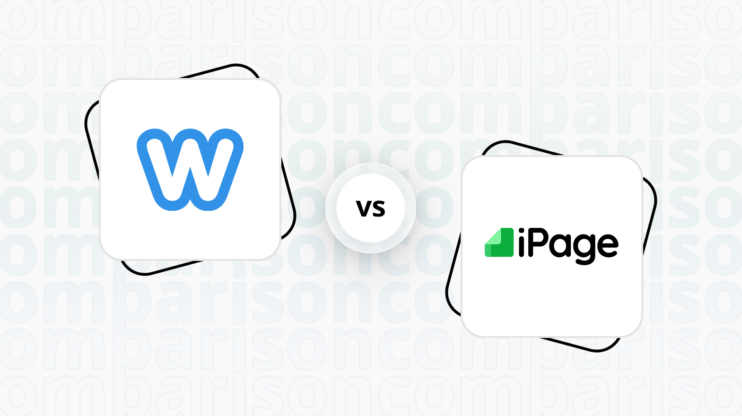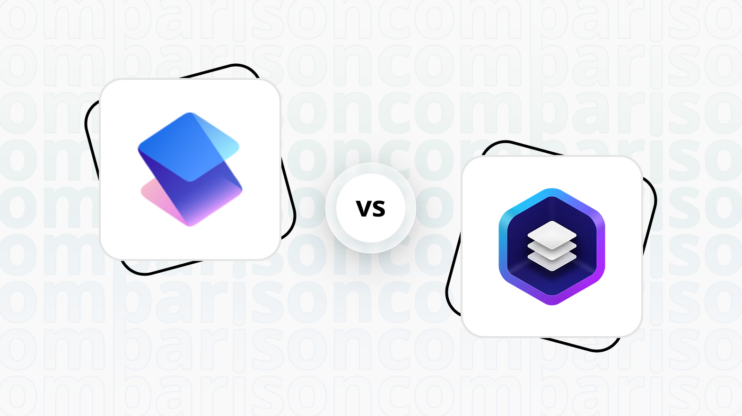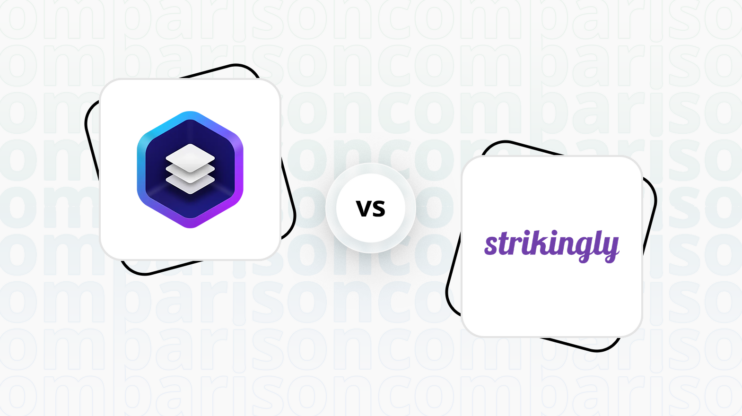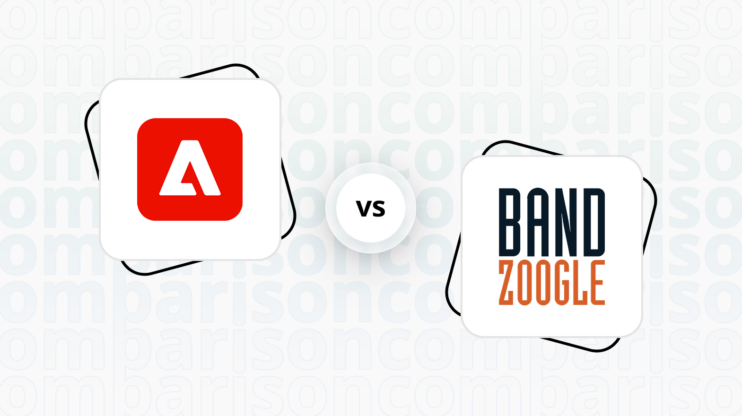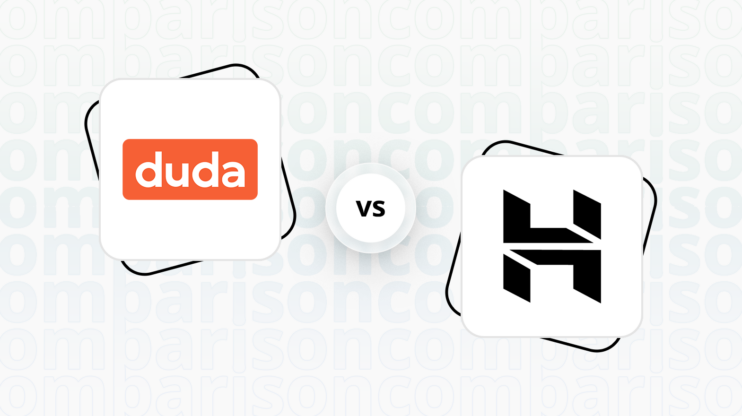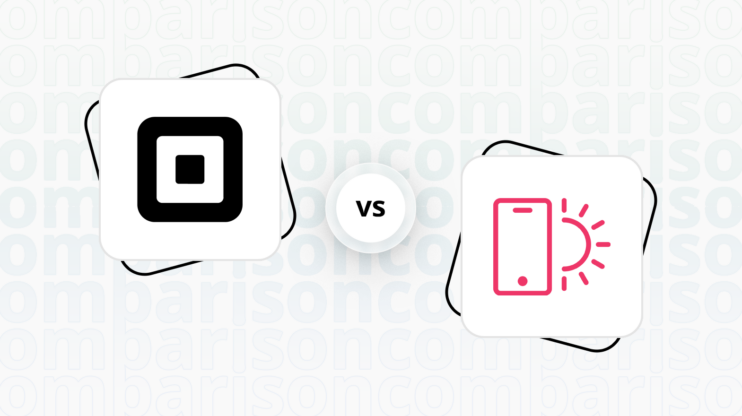Final verdict
Google Sites and Unbounce both offer unique advantages, but they cater to different needs and user bases.
-
Google Sites (Overall Grade: 5.6/10)
is ideal for users seeking a simple, collaborative website builder with seamless integration with Google services. It excels in ease of use and affordability, making it a great choice for team projects, personal portfolios, and small business websites. However, it lacks advanced design functionalities, ecommerce features, and AI capabilities, which may limit its appeal for more complex projects. -
Unbounce (Overall Grade: 6.4/10)
stands out for its focus on creating high-converting landing pages, popups, and sticky bars. It offers robust design functionalities, advanced marketing features, and strong AI capabilities, making it a preferred choice for marketers and businesses aiming to optimize conversion rates. While it is more expensive and has a steeper learning curve compared to Google Sites, its specialized features and integrations make it a powerful tool for targeted marketing campaigns.

|

|
|
|---|---|---|
|
Design functionalities & templates |
4.9 |
7.8 |
|
Ease of use |
8.3 |
8.2 |
|
Ecommerce |
1.8 |
4.8 |
|
Website editors |
7.0 |
7.5 |
|
Product testing options |
6.9 |
6.6 |
|
Price |
8.1 |
7.0 |
|
Hosting quality |
8.2 |
3.9 |
|
Website speed optimization |
3.3 |
5.6 |
|
Plugins/extensions and integrations |
6.4 |
6.8 |
|
Marketing features |
2.6 |
7.4 |
|
Customer support |
7.2 |
7.7 |
|
Website security |
9.3 |
8.4 |
|
AI capabilities |
0 |
7.5 |
|
User management |
7.8 |
7.2 |
Best for ecommerce
 1.8
1.8
 4.8
4.8
Verdict
: Google Sites and Unbounce are not primarily designed for ecommerce, but Unbounce offers more robust integration and optimization features compared to Google Sites.
-
Google Sites
: Google Sites is not built for ecommerce and lacks native ecommerce features. Users can integrate third-party tools for basic ecommerce functionalities, but it is not ideal for comprehensive online stores. When comparing Google Sites vs Unbounce, Google Sites falls short in providing a seamless ecommerce experience. -
Unbounce
: Unbounce excels in creating high-converting landing pages and integrates well with ecommerce platforms like Shopify and Ecwid. It offers tools for optimizing conversion rates, making it a better choice for targeted ecommerce campaigns. However, it is not a full ecommerce solution and may require additional integrations for complete ecommerce functionality.
Best for informational & business websites
 7.2
7.2
 5.9
5.9
Verdict
: Google Sites is better suited for informational and business websites due to its ease of use, integration with Google services, and robust security features. Unbounce, while excellent for creating high-converting landing pages, is less versatile for broader website needs.
-
Google Sites
: Google Sites scores 7.2 for informational and business websites. It is designed for ease of use with a drag-and-drop interface and seamless integration with other Google services like Drive, Maps, and Calendar. This makes it ideal for team projects, personal portfolios, and small business websites. Its collaborative features allow multiple users to work on a site simultaneously, enhancing productivity and teamwork. -
Unbounce
: Unbounce scores 5.9 in this category. It excels in creating custom landing pages, popups, and sticky bars with a strong focus on optimizing conversion rates. While it offers a user-friendly drag-and-drop interface and a wide range of templates, it is more specialized for marketing purposes rather than general informational websites. Unbounce integrates well with various marketing tools and analytics platforms, making it a powerful tool for marketers but less versatile for broader website needs.
Detailed comparison
Design functionalities & templates
Design FunctionalitiesRepresents how well each platform allows for creative design and customization of websites.Score Components:
- Template Variety (30%): Range and quality of design templates.
- Customization (30%): Flexibility and options for design alterations.
- User Interface (20%): Ease and intuitiveness of the design process.
- Responsiveness (10%): Adaptability to different devices and screen sizes.
- Innovation (10%): Unique design features and tools.
 4.9
4.9
 7.8
7.8
🏆
Winner: Unbounce.
Unbounce offers a more comprehensive set of design functionalities and templates, making it the preferred choice for users who prioritize customization and creative design possibilities.
Google Sites offers a limited number of templates suitable for various purposes, from personal blogs to business websites. These templates are designed for user engagement, simplicity, and functionality, allowing for customization to meet specific needs. However, compared to other website builders, Google Sites might offer less variety in templates and design customization options.
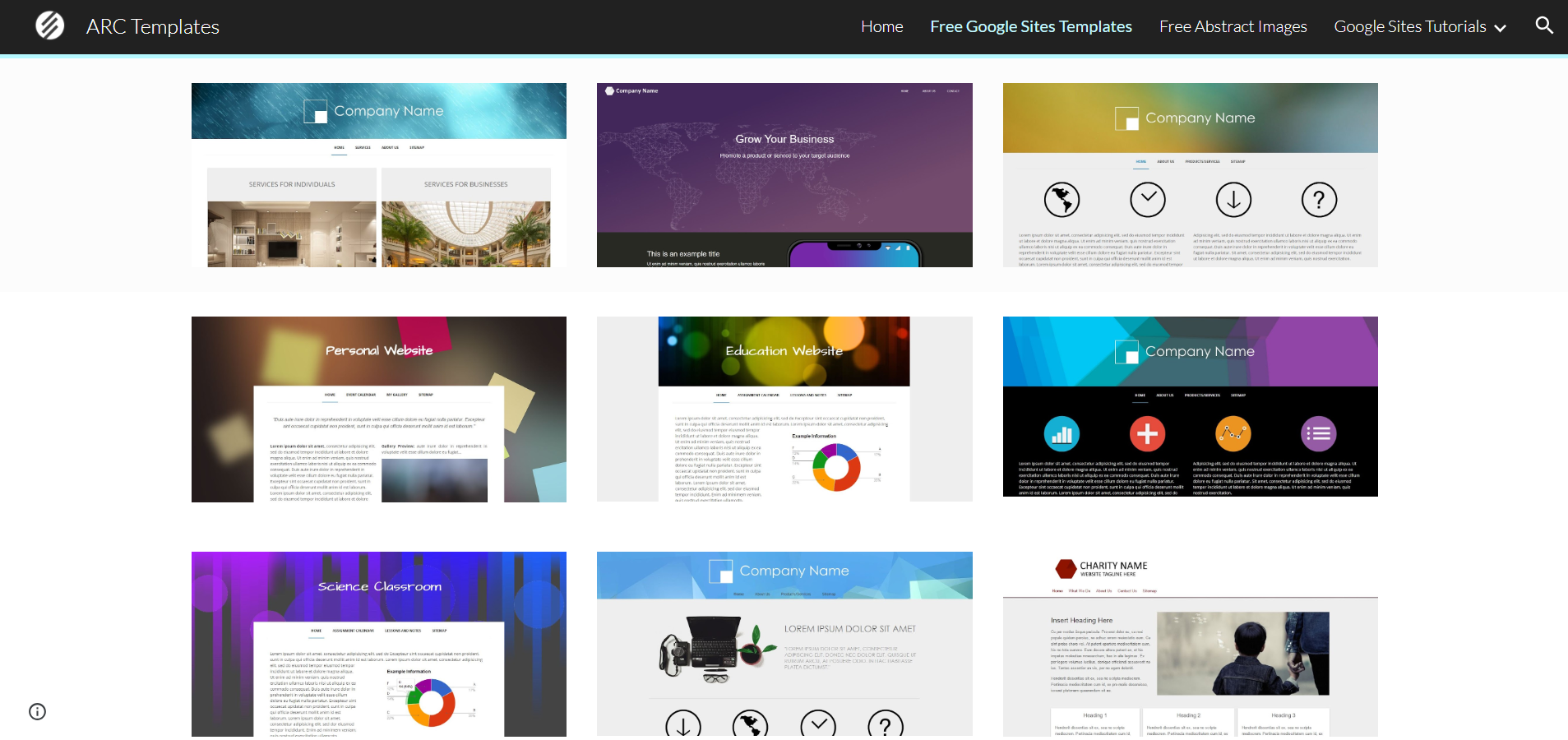

On the other hand, Unbounce provides a gallery of over 100 high-converting templates for landing pages, popups, and sticky bars. These templates are designed with conversion in mind, incorporating knowledge and insights gained from Unbounce’s experience in optimizing landing pages. Users have the flexibility to choose from these ready-to-use templates or start with a blank canvas to create their own designs using Unbounce’s drag-and-drop builder.
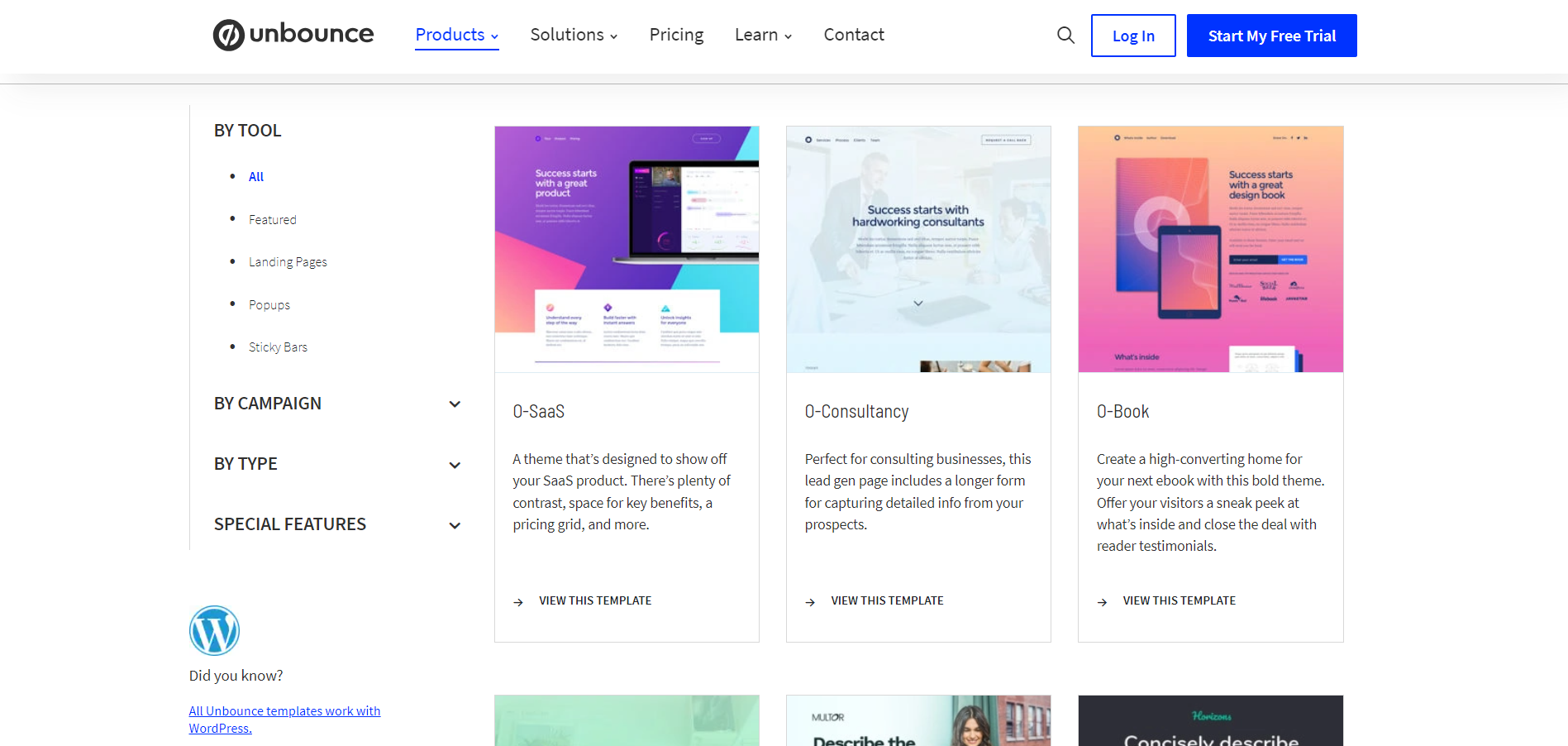
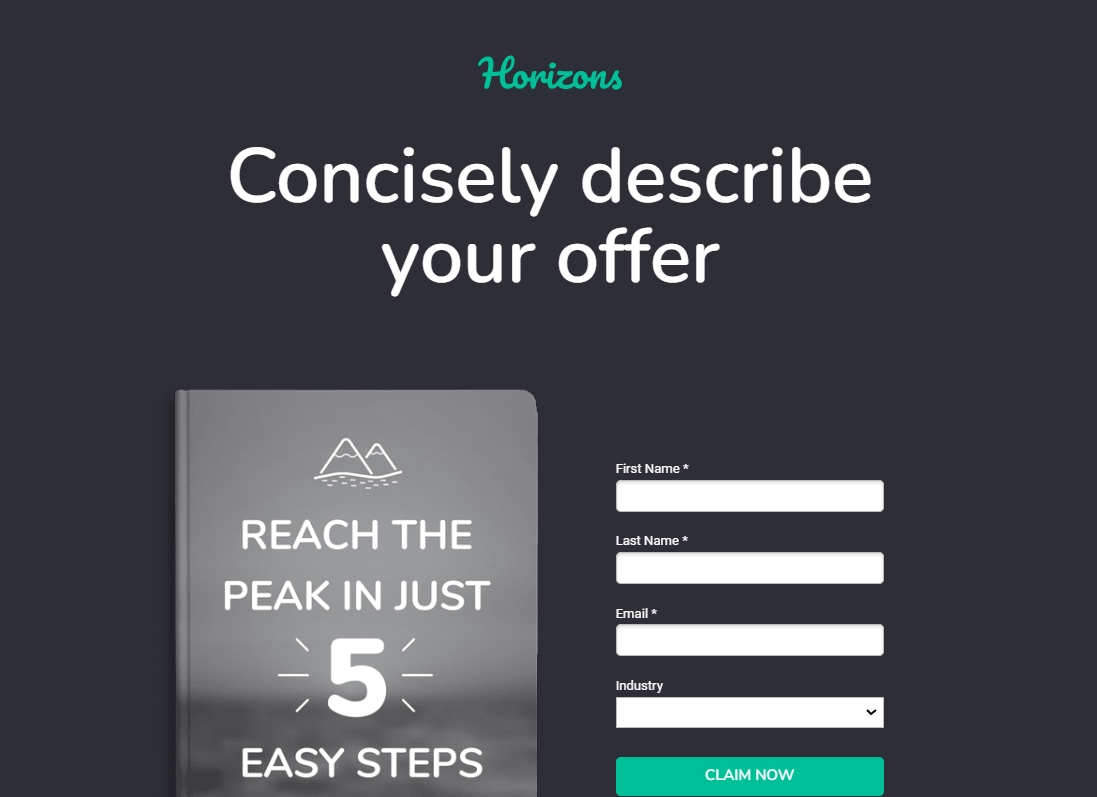
Get a head start on website creation with AI
Create a custom website tailored to your business needs 10X faster with 10Web AI Website Builder!
Ease of use
Ease of useReflects the platform’s overall user-friendliness.Score
Components:
- Learning curve (40%): Quickness and ease of getting started.
- Interface design (30%): Simplicity and intuitiveness of layout.
- User guidance (20%): Quality of tutorials and support.
- Flexibility (10%): Adaptability to various user skills.
 8.3
8.3
 8.2
8.2
🏆 Winner: Google Sites
. With a score of 8.3, Google Sites edges out Unbounce, which scored 8.2. Google Sites’ user-friendly interface and seamless integration with other Google services make it a straightforward tool for creating basic websites. Unbounce, while offering an intuitive drag-and-drop builder and a wide selection of templates, has been critiqued for its pricing and limited template selection.
Learning Resources
🏆 Winner: Unbounce
. Both platforms offer a wealth of learning resources, but Unbounce goes a step further with its comprehensive Help Centre, the Unprompted Podcast for marketing insights, and a Video Library for visual learning. Google Sites, while offering a wide array of resources, is more focused on practical guides for educators and comprehensive digital skill development programs.
For ecommerce
EcommerceMeasures the platform’s effectiveness in supporting online business activities.Score Components:
- Ecommerce themes and templates (20%): Variety and design of templates.
- Product management (25%): Ease of managing and organizing products.
- Payment options (25%): Variety and convenience of payment methods.
- Ecommerce features (20%): Features for managing an ecommerce store.
- Integration (10%): Compatibility with external e-commerce tools and services.
 1.8
1.8
 4.8
4.8
When it comes to ecommerce, neither Google Sites nor Unbounce are designed specifically for this purpose. However, both platforms offer ways to integrate ecommerce functionalities.
Google Sites does not have built-in ecommerce features or tools for setting up an online store directly. However, you can integrate ecommerce functionalities into a Google Sites website by embedding third-party tools or widgets, linking to an external ecommerce platform, or using buttons that link to payment processors. For instance, you could use Google Forms for order forms and integrate PayPal or another payment service for transactions. To have a full-fledged ecommerce platform with Google Sites, you’d need to rely on these external integrations or services.
Unbounce, on the other hand, stands out for its ability to create, test, and customize highly targeted ecommerce landing pages, aiming to double conversion rates compared to traditional online stores. It features a wide array of tools for conversion optimization, including A/B testing and Smart Traffic insights, alongside the unique Smart Copy features for enhanced copywriting. However, potential downsides include its relatively high cost, especially for entry-level plans lacking key features like A/B testing, and reported challenges with customer support and limited template selections.

|

|
|
|---|---|---|
|
Ecommerce themes and templates |
0.0 |
2.0 |
|
Product page customization |
0.0 |
3.0 |
|
Payment processing and commissions |
1.0 |
6.5 |
|
POS capabilities |
0.0 |
0.0 |
|
Payment gateways |
2.0 |
7.0 |
|
Product numbers |
0.0 |
0.0 |
|
Additional ecommerce features |
0.5 |
4.5 |
Google Sites ecommerce features:
Google Sites itself does not have built-in ecommerce features.
Unbounce ecommerce features:
- Shopify, Ecwid, or and other ecommerce solutions integration
Ecommerce themes & templates
Google Sites does not have any ecommerce templates. Unbounce primarily focuses on building landing pages, and does not have ecommerce specific templates.
Product page customization
Google Sites lacks any product page customization features, as the products can be listed with embedding third-party platforms, all the customization can be done within the mentioned platforms. Unbounce does have the possibility to create or customize product pages, it’s primarily focused on building landing pages, with the possibility to integrate with ecommerce platforms such as Shopify or Ecwid.
Payment processing
You can integrate payment gateways into Google Sites using external tools or links, not through native features. This can be done by embedding HTML code for payment buttons from services like PayPal, Square, or Stripe, or by linking to an external checkout page. Third-party ecommerce widgets also offer a way to add payment functionalities. However, Google Sites doesn’t offer the comprehensive ecommerce capabilities that dedicated platforms provide.
Unbounce supports payment processing through an integration with Stripe, allowing users to create landing pages that can handle transactions directly, with Stripe facilitating global payments in over 135 currencies. Unbounce itself does not mention charging additional fees for transactions, implying that fees are subject to Stripe’s own pricing structure. The platform is focused on optimizing online conversions and does not offer Point of Sale (POS) capabilities, as its core features are designed for enhancing digital experiences such as landing pages and pop-ups.
Website Editors
Website EditorsEvaluates the platforms’ website building and editing capabilities.Score Components:
- Customization tools (40%): Range and power of editing features.
- Editor usability (30%): User experience within the editor.
- Design flexibility (20%): Freedom in layout and design changes.
- Update and maintenance ease (10%): Simplicity of updating and maintaining the site.
 7.0
7.0
 7.5
7.5
🏆
Winner: Unbounce
. Unbounce, with a score of 7.5, offers a user-friendly drag-and-drop interface, enabling users to design and customize landing pages without the need for coding skills. It offers a variety of templates, widgets, and elements such as forms and buttons, alongside options for integrating custom HTML, CSS, and JavaScript for advanced customization. The platform supports responsive design, ensuring landing pages perform well across all devices, and includes features for A/B testing and dynamic text replacement to optimize conversion rates. Additionally, it allows for the integration of various marketing tools and platforms, enhancing the effectiveness of digital marketing campaigns.
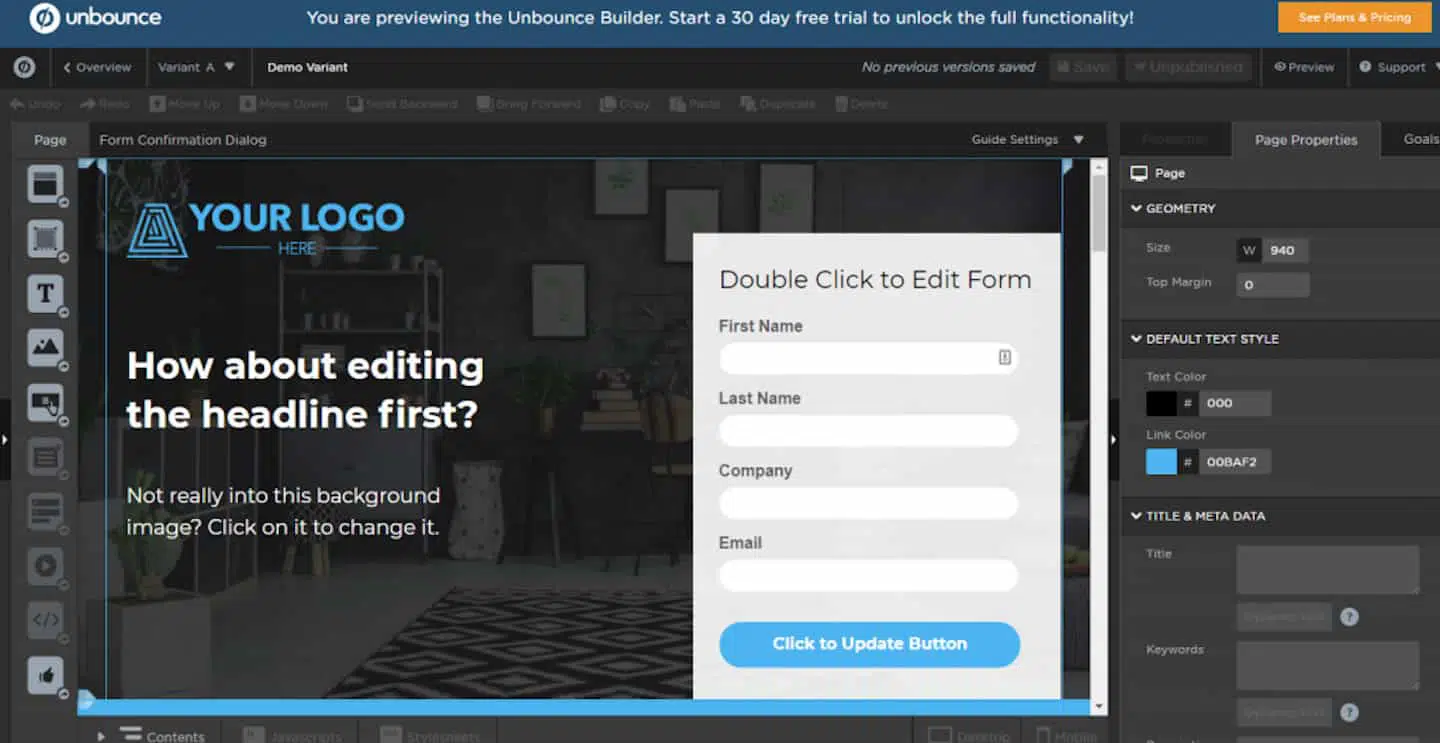
Google Sites’ editor, scoring 7.0, offers a user-friendly website builder editor that allows users to create and design websites without needing coding knowledge. With its drag-and-drop interface, users can easily add, customize, and arrange elements such as text, images, and videos on their web pages. It also provides a variety of templates and design options to help users get started quickly and ensure their site looks professional. Additionally, Google Sites integrates seamlessly with other Google services, enabling the incorporation of Google Docs, Sheets, Slides, and Maps directly into the website.
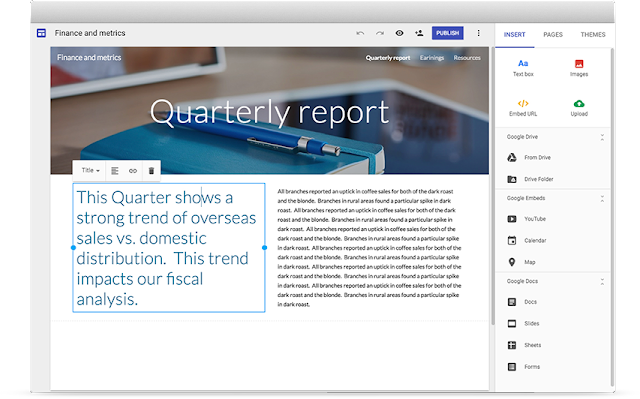
Mobile editor/app
 0
0
 0
0
🏆
Winner: None
. Unfortunately, neither Google Sites nor Unbounce offer a mobile editor app. This means that users cannot edit their websites on the go using a mobile device. Both platforms require users to use a desktop or laptop computer to make changes to their websites. This could be a significant drawback for users who prefer to work on their websites from a mobile device.
Product testing options
Product Testing OptionsAssesses the options for trying out platform features before commitment.Score Components:
- Trial quality (40%): Extent and usefulness of the trial or free version.
- Feature accessibility (30%): How many features are available to test.
- Trial duration (20%): Length of the trial period.
- Ease of transition (10%): Smoothness of moving from trial to paid plans.
 6.9
6.9
 6.6
6.6
Overall Result
:
Google Sites scores slightly higher than Unbounce with a score of 6.9 against 6.6
. Google Sites offers a free version and allows testing of some premium features within the trial period. Unbounce, on the other hand, does not offer a free version but allows testing of premium features during the 30-day free trial. However, users are required to enter their billing information for the free trial. Neither of the platforms offers a money-back guarantee.

|

|
|
|---|---|---|
|
Free Plan |
Yes |
No |
|
Trial Duration |
14 days | 14 days |
|
Testing Premium Features |
Some features during free trial |
All features during free trial |
|
Money Back Guarantee |
No | No |
Price
PriceLooks at the cost-effectiveness and value for money of each platform.Score Components:
- Plan value (40%): What each pricing tier offers.
- Transparency and clarity (30%): Clearness of pricing structures.
- Flexibility of plans (20%): Range of options to suit different budgets.
- Hidden costs (10%): Additional expenses not included in the plan.
 8.1
8.1
 7.0
7.0
Google Sites offers more affordable options, especially for teams and small businesses, while Unbounce, with its focus on conversion optimization, offers more specialized features at a higher price point.

|

|
|
|---|---|---|
|
$0-$10 |
Business Starter ($7.20/month): This plan includes basic features suitable for individuals or small businesses, offering professional email through Gmail, 30GB of storage per user, and video meetings for up to 100 participants. It allows to manage 1 website and there is no limitation on number of pages. Value for price: 6.0 |
No offering at this amount. |
|
$10-$20 |
Business Standard ($14.40/month): Suitable for growing businesses, this plan provides 2 TB of storage per user, video meeting capacity for up to 150 participants with recording features, and access to smart booking pages and shared drives. It allows to manage 1 website and there is no limitation on number of pages. Value for price: 7.5 |
No offering at this amount. |
|
$20-$30 |
Business Plus ($21.60/month): Designed for larger businesses needing more robust capabilities, offering 5 TB of storage per user, advanced security options, and video meetings for up to 500 participants. It allows to manage 1 website and there is no limitation on number of pages. Value for price: 8.5 |
No offering at this amount. |
|
$90-$100 |
No offering at this amount. |
Build ($99.00/month): Provides tools for building and launching high-converting landing pages, unlimited pages, popups, sticky bars, a form builder, free hosting, AI copywriting, custom scripts, 1,000+ integrations, support for 1 root domain with unlimited subdomains, catering up to 20,000 monthly unique visitors. Value for price: 6.5 |
|
$100-$200 |
No offering at this amount. |
Experiment ($149.00/month): Includes everything in the Build plan plus unlimited A/B tests, advanced reporting, dynamic text replacement, support for 2 root domains, and up to 30,000 monthly unique visitors. Value for price: 7.5 |
|
$200-$300 |
No offering at this amount. |
Optimize ($249.00/month): Adds to the Experiment plan with AI traffic optimization, visitor behavior insights, advanced targeting, supports 3 root domains, and caters to up to 50,000 monthly unique visitors. Value for Price: 8.0 |
|
$600+ |
No offering at this amount. |
Concierge (Starting at $649/month): Offers everything in the Optimize plan plus dedicated support, implementation services, client and user management, flexible add-on plans for scaling, starting with 5 root domains and 100,000 monthly unique visitors, with options to scale. Value for Price: 8.5 |
location. As a result in rare cases the prices displayed here can differ from the ones you see on their
websites.
Hosting quality
Hosting
qualityExamines the reliability and performance of the hosting solutions.Score Components:
- Uptime (40%): Consistency and reliability of website availability.
- Speed (30%): Loading times and performance.
- Bandwidth and storage (20%): Sufficiency of resources provided.
- Data centers (10%): Quality and distribution of hosting infrastructure.
 8.2
8.2
 3.9
3.9
🏆
Winner: Google Sites
Google Sites offers cloud-based managed hosting with a 99.9% uptime guarantee and operates 21 data centers globally. Unbounce also offers hosting but does not specify the type of hosting it provides or the locations of its data centers. It has a slightly higher uptime of 99.96% but does not offer an uptime guarantee.

|

|
|
|---|---|---|
|
Do they offer hosting? |
Yes, basic storage with 100MB free per site, can be increased by upgrading to Google Workspace |
Yes, but does not specify the type of hosting it provides |
|
Data Centers: |
Google operates a total of 21 data centers across the globe: 2 in Asia, 5 in Europe, 13 in US and 1 in South America |
Unbounce does not disclose the locations of its data centers |
|
Type of hosting: |
Cloud based managed hosting |
Does not specify the type of hosting it provides |
|
Uptime: |
99.9% |
99.96% |
|
Uptime Guarantee: |
Yes, 99.9% |
No |
Website Speed Optimization
Website Speed OptimizationEvaluates optimization of website loading timesScore Components:
- PageSpeed Score (30%): Google’s score indicating performance optimization.
- Loading Time (30%): The average time until a website is fully interactive.
- Mobile Optimization (15%): Optimization effectiveness for mobile devices.
- Resource Optimization (15%): Optimizing images, scripts, and other heavy resources.
- CDN Usage (10%): Use of CDN to enhance speed across geolocations.
 3.3
3.3
 5.6
5.6
🏆 Winner: Unbounce
Both Google Sites and Unbounce have strategies in place for website speed optimization, but Unbounce has a slight edge due to its specific focus on image optimization, caching, and Speed Booster.

|

|
|
|---|---|---|
|
Focus |
Automated Optimization, CDN, Mobile Optimization, Browser Caching, Code Minification, Use of AMP |
Image optimization, Caching, Speed Booster |
|
Performance Tools |
Google Lighthouse, PageSpeed Insights |
Google PageSpeed Insights Integration |
|
Key Strategies |
Automated Optimization, CDN, Mobile Optimization, Browser Caching, Code Minification, Use of AMP |
Image optimization, Caching, Speed Booster |
|
Load Times |
Google does not disclose statistics about website Page Speed scores, or load times |
Load times and PageSpeed scores vary depending on optimization and website complexity |
|
Page Speed Scores Range |
Google does not disclose statistics about website Page Speed scores, or load times |
Load times and PageSpeed scores vary depending on optimization and website complexity |
|
Core Web Vitals Improvement |
Emphasis on LCP, FID, CLS improvements |
Unbounce does not provide any information on their Core Web Vitals improvements |
Google Sites uses a variety of strategies for speed optimization, including automated optimization, CDN, mobile optimization, browser caching, code minification, and the use of AMP. However, Google does not disclose specific statistics about website Page Speed scores or load times. They do place an emphasis on improving Core Web Vitals, specifically LCP, FID, and CLS.
Unbounce, on the other hand, focuses on image optimization, caching, and their Speed Booster for speed optimization. While they do not provide specific statistics on load times and PageSpeed scores, they do note that these vary depending on optimization and website complexity. Unbounce does not provide any information on their Core Web Vitals improvements.
Get a head start on website creation with AI
Create a custom website tailored to your business needs 10X faster with 10Web AI Website Builder!
Plugins and integrations
Plugins and integrationsMeasures the range and effectiveness of additional plugins and integrations.Score Components:
- Variety of options (40%): Range of available add-ons.
- Integration smoothness (30%): Ease of integrating plugins into the site.
- Quality of plugins (20%): Functionality and reliability of the options.
- Custom integration capabilities (10%): Support for custom or third-party integrations.
 6.4
6.4
 6.8
6.8
🏆 Winner: Unbounce.
Unbounce, with a score of 6.8, offers a wide array of apps and integrations specifically designed to enhance the functionality of landing pages. These integrations facilitate advanced analytics, enhanced marketing automation, direct e-commerce transactions, and personalized user engagements. Google Sites, scoring 6.4, also offers a wide array of plugins and extensions to enhance website functionality, but Unbounce’s focus on conversion optimization gives it the edge.
It’s worth noting that while Unbounce excels in creating and managing landing pages, it’s not ideally suited for building entire websites, especially for larger projects requiring comprehensive site functionalities. On the other hand, Google Sites is a more versatile platform, suitable for a variety of projects including team projects, personal portfolios, and small business websites.


Marketing Features
Design FunctionalitiesRepresents how well each platform allows for creative design and customization of websites.Score Components:
- Template Variety (30%): Range and quality of design templates.
- Customization (30%): Flexibility and options for design alterations.
- User Interface (20%): Ease and intuitiveness of the design process.
- Responsiveness (10%): Adaptability to different devices and screen sizes.
- Innovation (10%): Unique design features and tools.
 2.6
2.6
 7.4
7.4
🏆
Overall Winner: Unbounce
. Unbounce stands out for its strong focus on optimizing conversion rates, allowing users to design high-converting pages without needing any coding skills. Google Sites, on the other hand, offers basic SEO features and Google Analytics integration, but lacks in email marketing, blogging, and ads and promotions.

|

|
|
|---|---|---|
|
SEO Tools |
Basic SEO settings |
|
|
Email Marketing |
No | Yes, with integration of third-party services |
|
Blogging |
No | No |
|
Social Media Integration |
Yes, you can easily embed social media links and widgets |
|
|
Analytics and Reporting |
Yes, Google Analytics integration |
|
|
Ads and Promotions |
No | Yes, Unbounce landing pages can be used for ad campaigns |
Customer Support
Customer supportEvaluates the quality and availability of support options.Score Components:
- Response time (40%): Speed of support responses.
- Support quality (30%): Effectiveness and helpfulness of the support.
- Availability (20%): Range of support channels (phone, chat, email).
- Resource richness (10%): Quality of self-help and educational materials.
 7.2
7.2
 7.7
7.7
🏆 Winner: Unbounce
. When comparing Google Sites vs Unbounce, Unbounce takes the lead in customer support with a score of 7.7. Unbounce offers a variety of support options, including live chat, email, and phone support, available Monday to Friday from 6 AM to 6 PM PST. Additionally, users have access to 24/7 support through their Help Centre, Community, and Chat Bot, ensuring continuous assistance.
Google Sites, with a customer support score of 7.2, primarily provides support through self-service resources like a Help Center and community forums. Direct support, including phone, email, and live chat, is available to Google Workspace customers, with 24/7 support for critical issues depending on the subscription tier. While Google Sites offers comprehensive support for paid users, Unbounce’s more accessible and varied support options make it the better choice for customer support.
Security
SecurityLooks at the platforms’ security measures and data protection.Score Components:
- Data protection (40%): Safeguards for user and customer data.
- SSL and encryption (30%): Implementation of secure connections.
- Compliance (20%): Adherence to industry security standards.
- Regular updates (10%): Frequency of security updates and patches.
 9.3
9.3
 8.4
8.4
🏆
Winner: Google Sites
. Google Sites, part of the Google Workspace, offers robust security measures including data encryption, two-factor authentication, and automatic malware scanning. It also benefits from Google’s regular security updates and compliance with international data protection standards. Google’s infrastructure provides DDoS protection and data redundancy, ensuring a secure environment for website creators and visitors.
Unbounce also prioritizes security, with a focus on protecting user data and compliance with key regulations. It employs a defense-oriented architecture and network safety measures, with systems residing within a private virtual network on AWS. Unbounce ensures enhanced protection against external threats, making it a secure platform for creating landing pages, popups, and sticky bars. However, it falls slightly short of Google Sites in terms of overall security score.
AI Capabilities
AI capabilitiesMeasures the effectiveness of AI-driven features and tools.Score Components:
- Automation efficiency (40%): Impact of AI on streamlining processes.
- Personalization (30%): AI-driven customization for users or customers.
- AI-Assisted design (20%): Role of AI in website design and functionality.
- Data analysis (10%): Use of AI in interpreting user data and analytics.
 0
0
 7.5
7.5

|

|
|
|---|---|---|
|
Personalized Design |
|
Unbounce’s Smart Builder offers personalized templates and design recommendations |
|
Content Generation |
|
Unbounce’s Smart Copy helps in generating various types of content |
|
Visitor Direction |
|
Unbounce’s Smart Traffic directs visitors to the most appropriate landing page variant |
🏆 Winner: Unbounce
. Unbounce, with a score of 7.5, utilizes AI to optimize landing page creation, content generation, and visitor direction. Its AI features focus on providing personalized templates, generating various types of content, and directing visitors to the most appropriate landing page variant.
Google Sites, on the other hand, does not have any AI capabilities. Therefore, it does not score any points in this category.
User Management
User ManagementAssesses the platforms’ capabilities in managing user roles, permissions, and accessibility.Score Components:
- Role Customization (40%): Flexibility in creating and defining user roles and
permissions. - Ease of Management (30%): User interface and tools for managing users.
- Access Control (20%): Effectiveness of access control measures for different user
levels. - Scalability (10%): Ability to manage a growing number of users efficiently.
 7.8
7.8
 7.2
7.2
🏆 Winner: Google Sites
. Google Sites and Unbounce offer different approaches to user management.
- Google Sites allows multiple users to collaborate with different roles, including Owners, who have full control, and Editors, who can modify content but not site settings. There’s no strict limit on the number of users who can edit a site, allowing flexibility in management and development. Viewers can only see the site, with no editing permissions. This structure supports collaborative website building with varied levels of access and control for different users.
- Unbounce offers one staff account on its basic plan, with the option to expand up to 15 accounts on the premium plan. It also provides customizable permissions, enabling you to restrict or grant access based on roles such as viewer, author, and administrator.
Unbounce User Roles and Access Levels:
| Role | Description | Access Highlights |
|---|---|---|
| Viewers | Members of your team who want to view and approve pages, popups, or sticky bars before publication. | Can access pages, popups, sticky bars, stats, and leads. Cannot edit/manage pages or access account management, billing details, domains, or add users. |
| Authors | Designers or copywriters invited to edit landing pages. | Can edit, manage, publish/unpublish pages, popups, sticky bars. Have access to viewing leads and stats. Cannot access account management, billing details, domains, or add users. |
| Administrators | Manage the Unbounce account, including billing details. | Can edit, manage, publish/unpublish pages, popups, sticky bars. Can access account management, billing details, domains, and add users. Cannot delete leads or remove other Admins. |
Additional Features

|

|
|
|---|---|---|
|
SSL Certificate |
|
|
|
Custom Domain |
|
|
|
Free Custom Domain Included |
|
|
|
International Domains |
|
|
|
Mobile Responsive |
|
|
|
Page Speed |
|
|
|
Website Builder Mobile App |
|
|
|
Convert a Website To An App |
|
|
|
Website Analytics |
|
|
|
Multilingual Sites |
|
|
|
Multiple Users |
|
|
User Feedback
Users consistently praise Google Workspace, particularly Google Sites, for its seamless integration, ease of use, and collaborative features, making it a go-to solution for various professional and educational needs. The platform’s simplicity and user-friendly interface are lauded, enabling effortless website creation and sharing of information within organizations. While some users desire more customization options and additional features, overall, Google Workspace remains highly valued for its versatility and streamlined workflow facilitation.
The reviews for Unbounce reveal a mixed sentiment among users. On the positive side, many appreciate its user-friendly, drag-and-drop page builder, which facilitates the quick creation and editing of landing pages without the need for technical expertise. Users find it beneficial for A/B testing, integrating with CRMs, and swiftly turning around marketing content. However, there are notable concerns, particularly with a case of unexpected switch to an annual plan without consent and refusal to refund, indicating potential issues with customer service and billing practices. Additionally, some users mention technical limitations, such as responsiveness issues and the absence of global elements for content updates across multiple pages, which can hinder efficiency.
The making of this blog
We followed a clear, step-by-step process to write and research this article.
FAQ
Which platform is better for creating landing pages, Google Sites or Unbounce?
Can I use Google Sites for ecommerce?
How do Google Sites and Unbounce compare in terms of ease of use?
Which platform offers better customer support?
Are there any AI capabilities in Google Sites or Unbounce?
Which platform is more secure?
What are the main differences in hosting quality between Google Sites and Unbounce?
Can I manage multiple users on both platforms?
How do the platforms compare in terms of pricing?
Which platform is better for marketing features?










